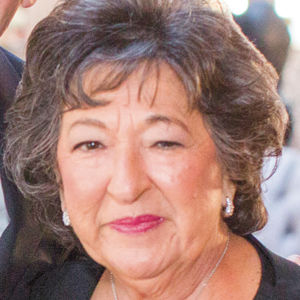Murals can be windows to our world
Published May 7, 2020
Murals, which are by definition a large painting or photo affixed to a wall, reflect the many aspects of our environment and society. They show both the good and the bad sides of our world and are a great way to involve people of all ages in expressions of their feelings through art.
They are especially beneficial during this pandemic because many murals are located on buildings outdoors and can be viewed from a comfortable social distance.
When I think of famous political and social muralists of the modern era, Diego Rivera is the first name that comes to mind. He was a well-known member of the Mexican Communist Party and his early murals reflected the country’s 1910 revolution. He went on to make murals in other countries, including the United States, and was quite a controversial character. His mural “Man of the Crossroads,” begun in 1933 for the Rockefeller Center in New York City, was removed after a furor erupted in the press over a portrait it contained of Vladimir Lenin.
I saw a terrific exhibition at the Whitney Museum of American Art in New York City entitled, “Vida Americana: Mexican Muralists Remake American Art, 1925-1945.” The wall text explained that “Mexico underwent a radical cultural transformation at the end of its Revolution in 1920, as a new relationship between art and the public gave rise to works that spoke directly to the people about social justice and national life. Numerous American artists traveled to Mexico around this time, and the leading Mexican muralists — Jose Clemente Orozco, Diego Rivera and David Alfaro Siqueiros — spent time in the United States. With works by 60 Mexican and American artists, ‘Vida Americana’ demonstrates the impact Mexican artists had on their counterparts in the United States, as they inspired American artists to create both epic narratives about American history and scenes of everyday life, and to use their art to protest economic, social and racial injustices.”
My friend Francie Broderick, one of the founders of Places for People, a social service agency in St. Louis, reminded me that there are famous murals in Northern Ireland that are truly the peoples’ art. Over the past 50 years they came to represent the fears, the triumphs, the losses, but mostly the hopes and aspirations of communities on both sides of the Northern Irish divide. In the days when it was illegal to fly the Irish flag or paint such murals, many were done under the cover of night.
Our own Missouri artist, Thomas Hart Benton, was one of the featured artists in “ida Americana.” From 1920 to 1928, Benton devoted himself to the execution of “American Historical Epic,” a 14-panel project that illustrated the founding and expansion of the United States.
Believing that art’s rule was to tell the truth and refusing to sanitize history, he showed social and environmental injustices. By depicting the persecution of African Americans, Native Americans and women in his work, Benton argued that slavery, racial conflict, the displacement of indigenous people and economic exploitation were fundamental aspects of the country’s early history that needed to be acknowledged if the United States was truly going to fulfill its democratic ideals.
This same theme is shown in our state capitol’s House Lounge in Jefferson City. In “A Social History of Missouri,” Benton doesn’t exclude the uglier part of Missouri’s history. In a couple of panels, he shows images of slavery and the expulsion of Mormons from the western part of the state.
For many years, Emerson Electric has provided funding to send Craft Alliance artists to work with students in various schools around St Louis, designing and creating ceramic tile murals that are permanently installed in school walls. COCA, the Center for Creative Arts, has a strong tradition in its outreach programs of partnering with schools and communities in the creation of public artworks, including murals.
“Reflecting On a River” is a 190-foot-long permanent art installation that graces the downtown St. Louis floodwall with its celebration of the rich natural history of the Mississippi River. Catherine Magel, a St. Louis artist, designed this mural to celebrate a profound, fundamental natural resource. Assisted by Grace Hill AmeriCorps Trail Rangers, Magel worked with more than 1,500 youngsters and adults from all parts of the area to craft tiles for this magnificent mural. Student interns in fine arts at regional universities also had a chance to participate in this project.
Claudio Rico, a young Mexican muralist who goes by the name of Remix, came to work with Paul Artspace in St. Louis, a space for artists in residence from all over the world. He was commissioned to paint a mural in Grand Center by the Kranzberg Arts Foundation. Rico says, “Most of my artwork does not have a background with a direct review of any part of society; however, I do art that can be used as a way to inspire others to be the best version of ourselves, better parents, better citizens, better human beings. It is a reminder for you to choose to flow and to allow yourself to be free — free to cry, to laugh, simply to be. And at the moment I do it for others. I can recognize my own humanity and I allow my own truth to finally settle down.”
It’s been said that a picture says more than a thousand words. I think these murals say more than a million words can say.
For more of Nancy Kranzberg’s commentary, listen to KWMU (90.7) St. Louis on the Air the first Friday of each month at approximately 12:50 p.m. She also hosts a weekly Arts Interview podcast for KDHX (88.1), available at artsinterview.kdhxtra.org.














